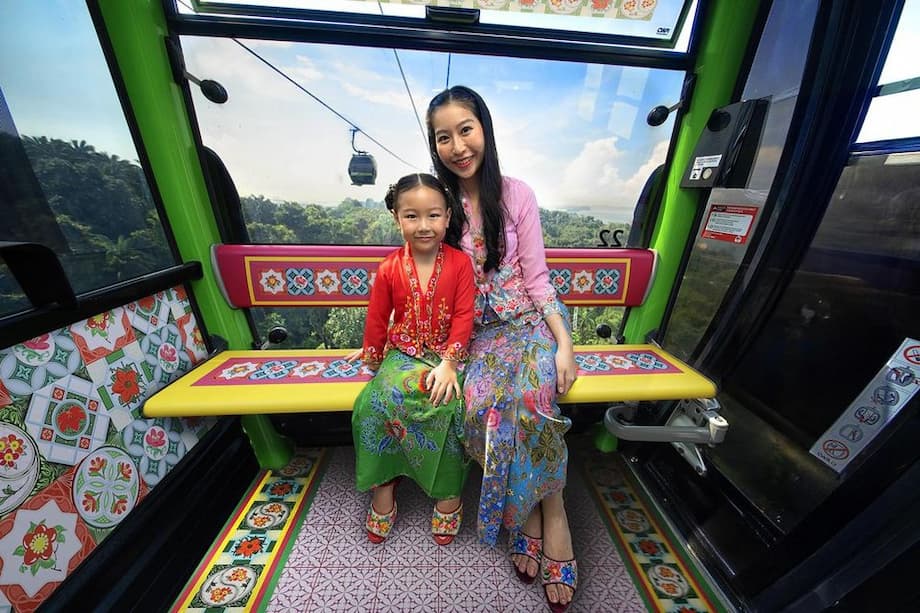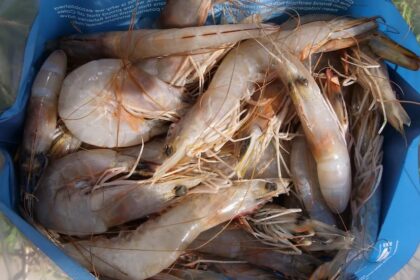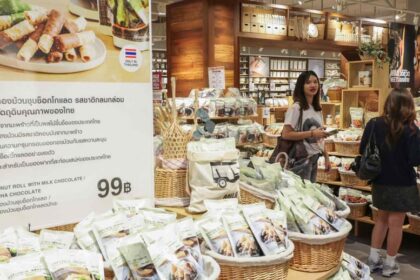Singapore’s Tourism Ambitions: Aiming High, But At What Cost for Locals?
Singapore has long been celebrated as a world-class destination, renowned for its gleaming skyline, efficient infrastructure, and a steady stream of headline-grabbing mega attractions. In recent years, the city-state has doubled down on a “quality tourism” strategy, investing billions in new experiences and targeting high-spending international visitors. Yet, as the Lion City cements its status as a global tourism powerhouse, a growing chorus of local voices is raising concerns: Are Singapore’s attractions becoming too expensive for its own residents?
- Singapore’s Tourism Ambitions: Aiming High, But At What Cost for Locals?
- Why Are Locals Feeling Priced Out?
- Government Vouchers and Local Discounts: Are They Enough?
- Tourism Strategy: Quality Over Quantity
- How Locals and Visitors Can Save: Practical Tips
- Global Trends: Affordability in the Spotlight
- In Summary
From the opening of Rainforest Wild Asia and the Singapore Oceanarium to the much-anticipated Minion Land at Universal Studios Singapore, the city’s tourism landscape is evolving rapidly. Integrated resorts like Marina Bay Sands and Resorts World Sentosa are pouring resources into upgrades and expansions. The Singapore Tourism Board (STB) touts these developments as part of a vision to deliver “exceptional, world-class experiences.” But for many Singaporeans, the price of admission—literally and figuratively—feels increasingly out of reach.
Why Are Locals Feeling Priced Out?
For homemaker Esther Lim, the last visit to a local attraction was before the Covid-19 pandemic. “It’s not just the ticket prices,” she explains. “By the time you add transport, food, and maybe a souvenir for the kids, it’s a lot.” Her experience is far from unique. Surveys and anecdotal reports indicate that many Singaporeans have not visited major attractions in recent years, citing affordability as a key barrier.
Singapore consistently ranks at the top for tourism infrastructure and service quality in Asia-Pacific. However, it fares poorly on price competitiveness. According to a comparative study by travel platform Omio, Singapore is the most expensive among Southeast Asia’s top five backpacker destinations, with hostel beds averaging £51 per night—far higher than Vietnam, Indonesia, or Thailand. While Singapore offers extended visa-free stays and seamless transport, the cost of enjoying its attractions can be daunting for both locals and budget travelers.
International travel blogs and forums echo these sentiments. Travelers report that while Singapore’s public transport is affordable and hawker centers offer cheap, delicious meals, the cost of paid attractions quickly adds up. A day of sightseeing for a family can easily exceed S$100, especially if multiple attractions are on the itinerary.
Comparing Singapore to Regional Neighbors
Singapore’s neighbors—Vietnam, Indonesia, Thailand, and Malaysia—are often cited as paragons of affordable travel. Vietnam, for instance, tops regional rankings for budget-friendliness, with hostel beds as low as VND30,000 (about US$1.20) and meals under US$2. In contrast, Singapore’s cheapest dorm beds start at S$30-40 per night, and attraction tickets can range from S$20 to S$50 per person.
These disparities have real consequences. As travel costs rise in Singapore, more residents are opting for short getaways to Malaysia, Thailand, or the Philippines, where their money stretches further. Regional travel agencies report a surge in demand for group tours to these destinations, especially during peak periods when Singapore’s hotel and attraction prices spike.
Government Vouchers and Local Discounts: Are They Enough?
During the pandemic, the government issued SingapoRediscovers vouchers to encourage domestic tourism. These vouchers were widely used for attraction tickets, helping families rediscover local gems. In 2025, Singapore’s diamond jubilee year, the government introduced SG60 vouchers for residents. However, these can only be used for daily expenses—not for attraction tickets—prompting calls for greater flexibility.
Attractions have responded with a slew of special deals for locals, including:
- Discounted season passes and one-for-one promotions for residents
- Special rates for seniors and children
- Community group bundles and preferential pricing for Singaporeans
For example, Mandai Wildlife Reserve’s SG60 offer provides seniors with discounted entry, while Universal Studios Singapore has rolled out season passes at reduced rates for locals. The ArtScience Museum and other venues offer preferential pricing for Singaporeans and permanent residents.
Despite these efforts, awareness remains an issue. Many residents are unaware of ongoing promotions, and some deals are not well-publicized. Experts suggest that more could be done to inform the public and to target support at lower-income families, such as through group buys, corporate sponsorships, or expanded community outreach.
Community Initiatives: Bridging the Gap
Recognizing the need for inclusivity, several attractions have launched social inclusion programs. These initiatives provide free or subsidized access for vulnerable groups, including seniors, lower-income families, and people with disabilities. For instance, a recent collaboration between the Chinese Development Assistance Council (CDAC), Singapore Chinese Chamber of Commerce & Industry (SCCCI), and Mandai Wildlife Group enabled over 120 less-privileged families to enjoy a day at Rainforest Wild Asia, complete with fun packs and family vouchers.
As one volunteer put it, “We must continue to support one another, so that everyone can share in our nation’s progress.”
Such programs, while impactful, are not a substitute for broader affordability. Many locals still feel that regular visits to attractions are a luxury rather than a routine family outing.
Tourism Strategy: Quality Over Quantity
Since 2013, the STB has pursued a “quality tourism” strategy, shifting focus from sheer visitor numbers to value creation. The aim is to attract high-spending tourists who seek unique, memorable experiences—think luxury hotels, celebrity chef restaurants, and blockbuster attractions. This approach has paid dividends: Singapore remains a top choice for international travelers, especially from China, Australia, and the region.
However, this strategy comes with trade-offs. By prioritizing premium experiences, Singapore risks alienating price-sensitive segments, including its own residents. The city’s reputation as an expensive destination is reinforced by international rankings and travel guides, which routinely place it among the priciest cities in the world.
Yet, Singapore’s tourism authorities argue that quality and accessibility are not mutually exclusive. The STB points to ongoing efforts to innovate, diversify offerings, and ensure that locals benefit from tourism’s economic and social vibrancy. Surveys show that most Singaporeans believe tourism enhances the country’s quality of life, bringing energy, jobs, and cultural exchange.
Balancing Act: Can Singapore Be Both World-Class and Accessible?
Industry experts suggest that Singapore’s challenge is to strike a balance between exclusivity and inclusivity. While marquee attractions and luxury experiences are essential for global competitiveness, affordable options and community engagement are equally vital for social cohesion.
Some ideas floated by experts and community leaders include:
- Allowing SG60 vouchers to be used for attraction tickets, at least during school holidays
- Expanding awareness campaigns for local discounts and promotions
- Partnering with corporations to sponsor tickets for lower-income families
- Developing more free public events and installations in conjunction with major attractions
There is also a call for attractions to offer more flexible pricing, such as off-peak rates, family bundles, and dynamic ticketing based on demand.
How Locals and Visitors Can Save: Practical Tips
Despite the high cost of some attractions, it is possible to enjoy Singapore on a budget. Travel experts and bloggers recommend several strategies:
- Eat at hawker centres: Singapore’s famous food courts offer Michelin-rated meals for under S$5, making them a favorite for both locals and tourists.
- Use public transport: The MRT and buses are efficient and affordable, with daily costs averaging S$8. Consider a Singapore Tourist Pass for unlimited rides.
- Explore free attractions: The Botanic Gardens, Gardens by the Bay light show, Sentosa’s beaches, and vibrant neighborhoods like Chinatown and Little India offer rich experiences at no cost.
- Buy bundled tickets: Purchasing attraction passes in advance or as part of a bundle can yield significant savings.
- Time your visit: Avoid peak periods such as school holidays, National Day, and the Formula 1 Grand Prix, when prices for hotels and attractions surge.
For those willing to plan ahead and make savvy choices, Singapore can still be enjoyed without breaking the bank. However, for families with young children or seniors, the cumulative cost of tickets, food, and transport remains a concern.
Global Trends: Affordability in the Spotlight
Singapore’s affordability debate is not happening in isolation. Across the world, travelers are becoming more cost-conscious, especially in the wake of inflation and economic uncertainty. Chinese tourists, for example, are opting for shorter, more affordable trips during peak holidays, with Singapore remaining a popular destination despite its higher costs. Meanwhile, regional competitors like Vietnam and Indonesia are aggressively marketing their value-for-money credentials to attract budget travelers.
Travel agencies and tourism boards are responding with innovative packages, flexible payment options, and targeted promotions. In India, for instance, Mysore Sales International Limited (MSIL) has launched affordable tourism packages with group discounts and EMI schemes, aiming to make travel accessible to all economic groups. While Singapore’s context is unique, such initiatives offer inspiration for how affordability and quality can coexist.
In Summary
- Singapore’s tourism strategy focuses on quality and value, with major investments in new attractions and premium experiences.
- Locals are increasingly concerned about the affordability of attractions, with many citing high admission prices and additional costs as barriers.
- While special deals and community programs exist, awareness and accessibility remain challenges, especially for lower-income families.
- Regional neighbors like Vietnam, Indonesia, and Thailand offer far more affordable travel experiences, prompting some Singaporeans to look abroad for leisure.
- Experts suggest greater flexibility in voucher use, expanded awareness campaigns, and more inclusive pricing models to ensure locals can enjoy Singapore’s world-class attractions.
- With careful planning, both locals and visitors can find ways to enjoy Singapore on a budget, but broader measures may be needed to ensure tourism’s benefits are shared by all.












